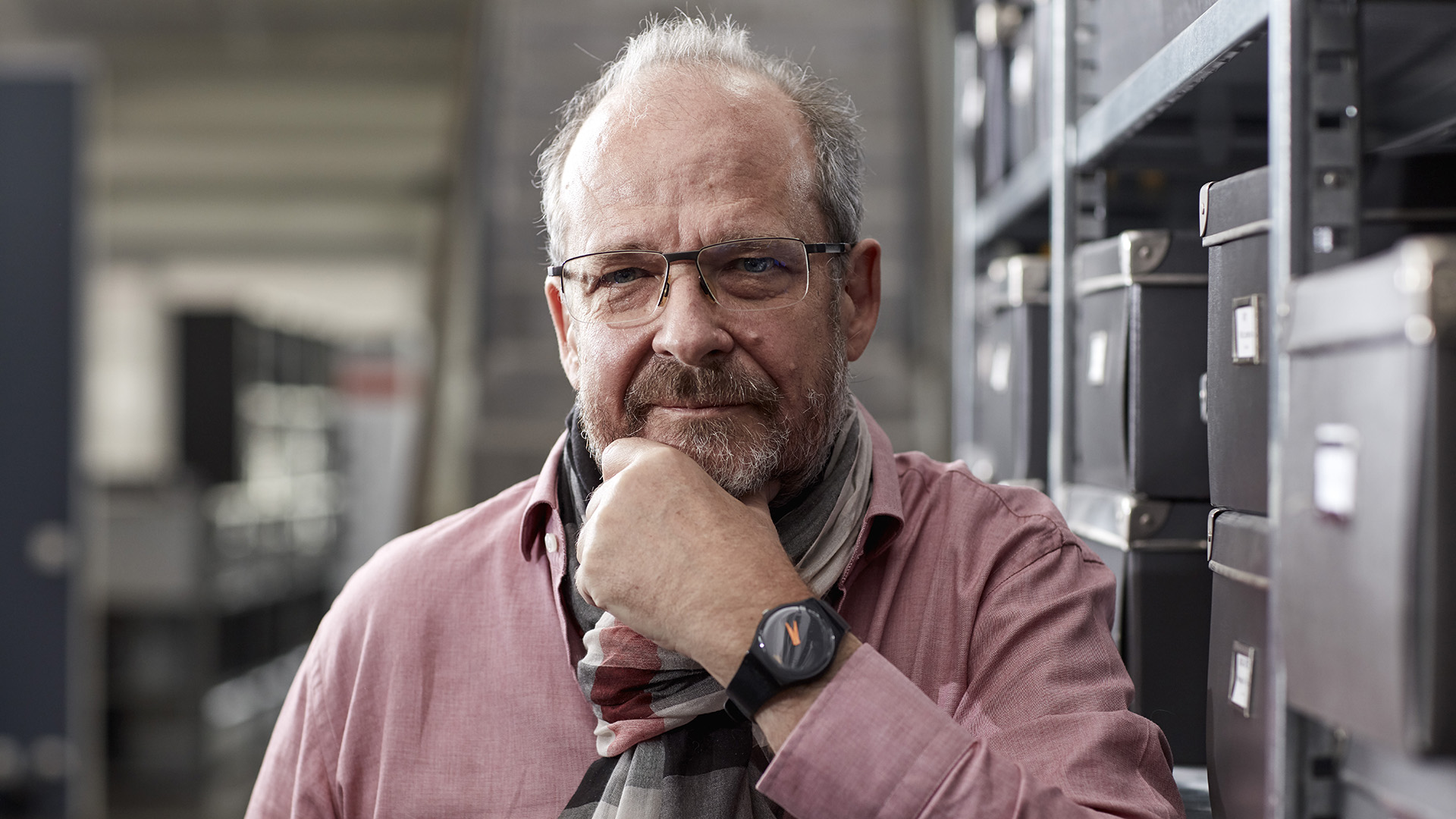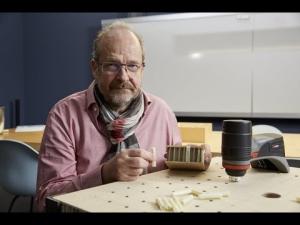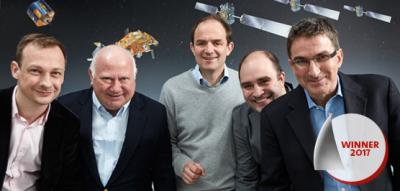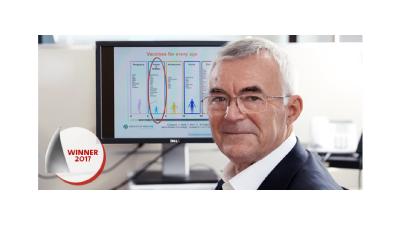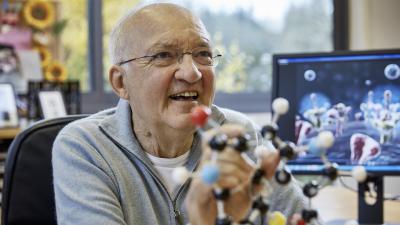Elmar Mock
Swatch, ultrasonic welding and more
Finalist for the European Inventor Award 2017
What began as a hasty sketch of a simple, plastic wristwatch eventually became the world's best-selling timepiece. The Swatch, which first hit the market in 1983, helped rejuvenate Switzerland's beleaguered watchmaking industry.
Swatch's creation owes much to its co-inventor, Elmar Mock, who developed ultrasonic welding processes that were used inside the watch's case and to attach its acrylic crystal. These techniques, along with a novel design, reduced the number of pieces necessary to build a wristwatch by almost half - from the 91 pieces found in standard timepieces down to only 51 - and slashed production costs.
The Swatch was an overnight sensation. It also jump-started the career of serial innovator Mock, who is the inventor or co-inventor of 178 patent families across a variety of industries ranging from watchmaking to mechanical and medical engineering. Mock and his Creaholic team reworked the Swatch's ultrasonic welding techniques for several offshoot applications, including "welding" wood, concrete and even human bone. These, in turn, became the seedbed for his company Creaholic, which now develops innovative technological solutions for over 200 clients and has produced nine successful spin-offs.
Societal benefit
The Swatch was a revolutionary device; it marked one of the first intersections of functionality and fashion, and was a precursor to more modern, must-have gadgets that enjoy similar ubiquity. The Swatch's impact, however, extends beyond the realm of consumerism. It acted as a springboard for Mock to dedicate the rest of his life to encouraging and celebrating inventiveness. His consulting company, Creaholic, not only specialises in helping clients across numerous sectors with creative solutions, it also doubles as a start-up incubator.
Creaholic has launched nine spin-offs. One of these, SpineWelding, capitalises on the ultrasound welding technology that Mock used in the Swatch. Rather than watch parts, however, SpineWelding manufactures orthopaedic implants that are effectively "glued" to vertebrae using a thermoplastic-resin adhesive that is melted by ultrasound. Another spin-off, WoodWelding, implements a similar technique to connect wood and other porous material used in furniture, flooring and panels. Licensees include Ikea and German fastener company Würth.
Creaholic's endeavours now extend far beyond ultrasonic welding applications. Three of its spin-offs offer ways to minimise water consumption. Smixin's patented handwashing station saves up to 90% of the water of a typical washbasin. The Gojsa showerhead and Joulia drain dramatically reduce the amount of water and energy needed for bathing. Meanwhile, electronics spin-off Miniswyss has developed a tiny, highly efficient piezomotor that is used in smartphone cameras for autofocus, zoom and macro-zoom functions.
Economic benefit
The launch of the Swatch ended a painful decade for Swiss watchmaking. In its heyday from the 1950s through to the 1970s, the Swiss commanded up to 90% of the global market, but by 1983 their market share had dropped to 15%. Within a few years of the Swatch's international unveiling, however, annual sales were already running at millions of units. By 2014, more than 600 million Swatch wristwatches had been sold, generating revenues in excess of EUR 6.15 billion. Today, the Swatch Group, which controls 18 brands among 37 subsidiaries across 50 countries, is the world's largest watch manufacturer.
Founded in 1986, Creaholic has a workforce of around 50 people and has completed more than 800 consulting contracts. The company has yearly revenues of just under EUR 5 million and estimates that the ideas provided by its consultants generate some EUR 3.75 billion annually for clients. One of Creaholic's main clients is the Swedish food-packaging firm Tetra Pak; its agreements with this firm generate about 5-10% of its annual income. Creaholic has also worked for Würth, Ikea, Nestlé, Du Pont, Bosch, Nespresso, BMW and Roche.
The nine spinoffs from Creaholic's start-up incubator belong to the employees themselves. Several of these spinoffs are offshoots of technologies first developed for consultancy clients and then used in different fields or sectors under intellectual property agreements.
How it works
To assemble the outer casing of a Swatch, 20 ABS plastic studs are staked to lock in place roughly 30 pre-assembled pieces. Each stud is attached in less than one-hundredth of a second. The acrylic crystal is also welded over the housing, producing a water-tight seal.
The ultrasonic welding employed for the crystal and studs use high-frequency vibrations (more than 15 kHz) emitted by a tool called an ultrasonic horn. These vibrations are applied to polymers on each side of a bond, and mechanical energy is transformed into heat to bond the polymers together.
Mock was not only the first person to employ ultrasonic welding to watch parts and with with his Creaholic team has also expanded its uses to bone, wood and numerous porous materials. In the wood applications, for example, a polymer stud might be pushed through a plastic part on the surface of a wood sheet. The stud is then ultrasonically liquefied to generate a bond between the wood and the plastic part. This type of application is faster and less expensive than other methods using adhesives or screws.
The inventor
Elmar Mock grew up in the French-speaking region of Switzerland and has two degrees in engineering. He was the only member of his class to land a job right after graduation with a prominent watchmaker, ETA, and quickly took the lead in the company's plastic moulding operations.
After a brief hiatus to earn another degree, he convinced his boss to invest in a state-of-the-art plastic injection moulding machine. Mock, only 26 at the time, set about turning a hastily sketched design of a simple, plastic wristwatch into what became the Swatch.
Mock left ETA, the company that turned into Swatch, in 1986 and spent several years as a self-employed consultant. His idea of creating an enterprise based on leveraging the experience gained by one innovative breakthrough to spawn new ones led to the founding of Creaholic, where he continues to work.
In 2010, Mock was awarded the International Watchmaking Museum's Gaïa Prize, for his invention of the Swatch (shared with co-inventor and watchmaker Jacques Müller).
Did you know?
Although Mock has long since left watchmaking behind and now concentrates on other fields, he continues to look at watches as a source for further technology development. The wrist remains an "innovative hot-spot" as Elmar Mock calls it, although the watch has now taken on a supporting role to technology in other devices: "Watchmaking has switched from the mastering of mechanical cogs to the adeptness of electronics and algorithms." The future might entail further integration between the watch, its wearer and other technology, but the watch might reinvent itself entirely, says Mock, "and even end up in our clothes or on other parts of the human body."
Inventors revisited
In 2020, the EPO reconnected with former finalists and winners for their views on trends in innovation and intellectual property, and a rare glimpse at cutting-edge new research and inventions.

Inside the mind of an inventor
From water‑saving technology to the famous Swatch, Elmar Mock has had a prolific career in which he was named as the inventor or co‑inventor in 178 patent families. But what makes a professional inventor tick? Now semi‑retired, Elmar Mock provides a glimpse into his inquisitive mind and shares the out‑of‑the‑box thinking that has helped him develop non‑conformist solutions over many decades.

Talk innovation
There are few who think outside the box quite like Elmar Mock. There are also few who have been as prolific – Elmar has worked on some 800 projects. How does he approach the inventive process? Inventing, it seems, is not a straightforward process.
Media gallery
Contact
European Inventor Award and Young Inventors Prize queries:
european-inventor@epo.org Subscribe to the European Inventor Award newsletterMedia-related queries:
Contact our Press team#InventorAward #YoungInventors
